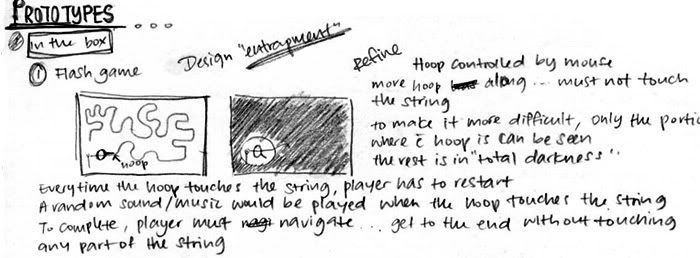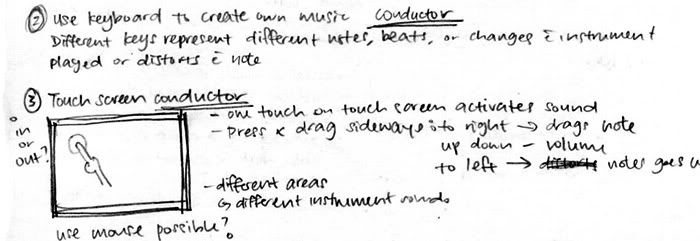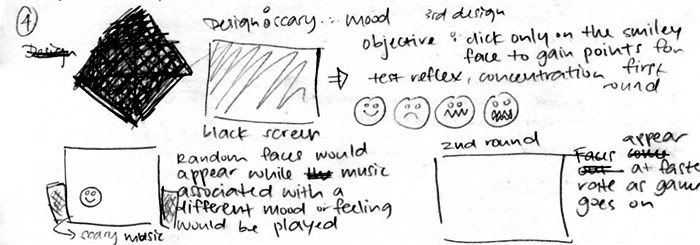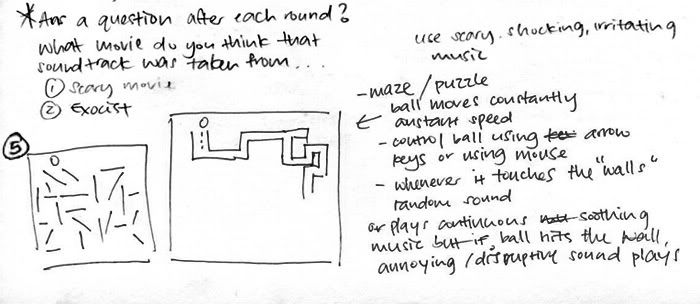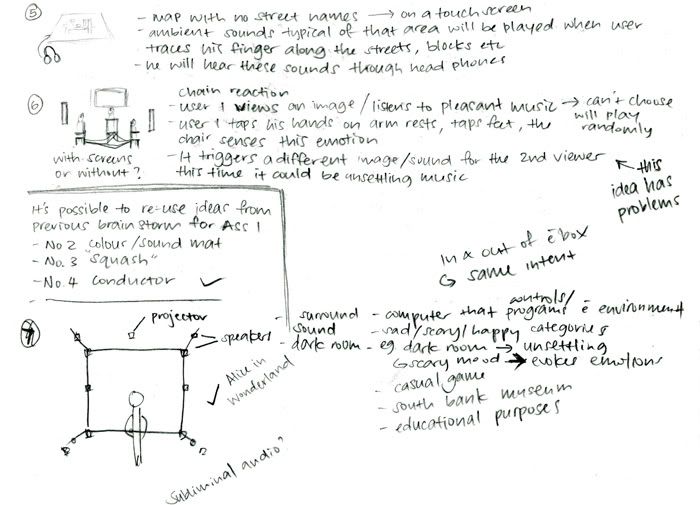
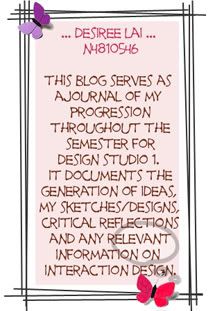
Sunday, April 30, 2006
Any problems viewing the prototype here? You can go to this link http://student.ci.qut.edu.au/~n4810546/kib210/lowfiproto.swf
Friday, April 28, 2006
Design process for Flash prototype:
2) Search for suitable sound effects and background music
_____________________________________________________________
1)The Maze:
I did a search on the internet to find a suitable maze to use in my flash game. I found this image at http://sinai.critter.net/gallery/blakat-maze.gif and it looked challenging.

Here is an image of the modified maze:
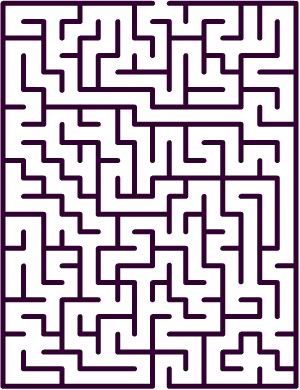
And here is a guide; a game cheat if you will:
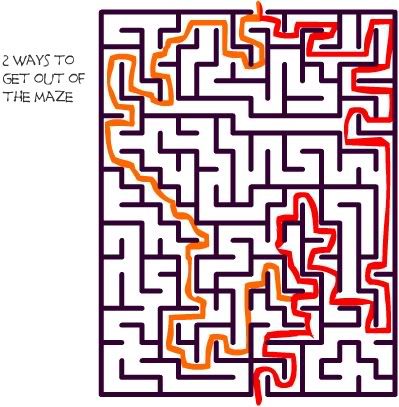
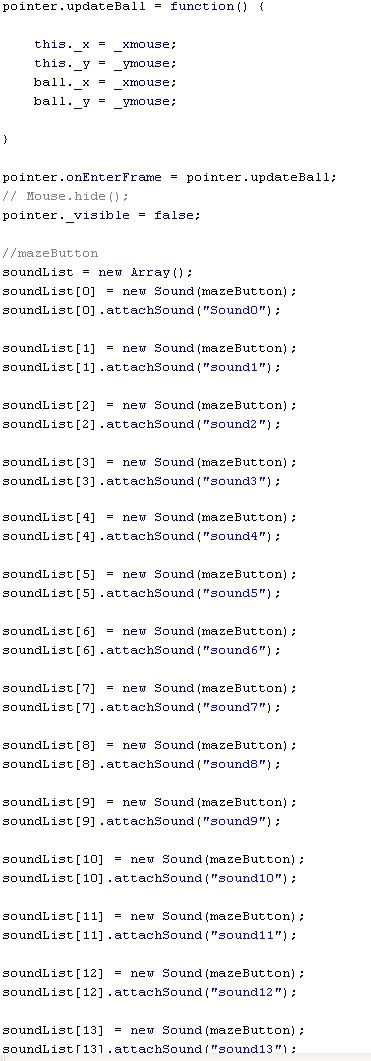
Actionscript placed on the maze button

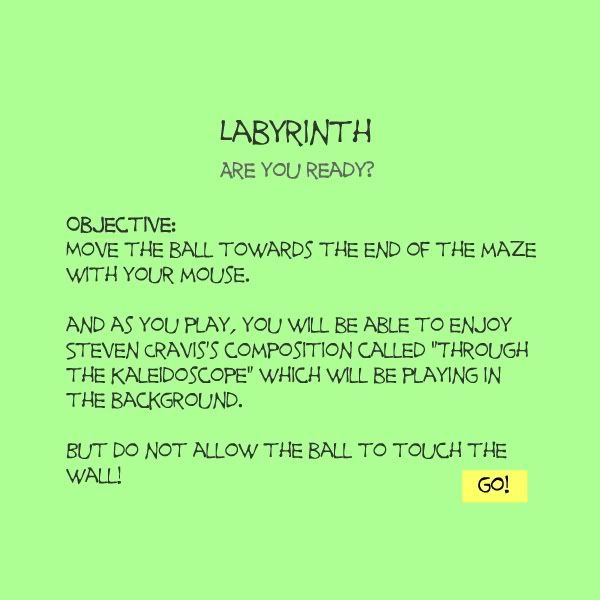
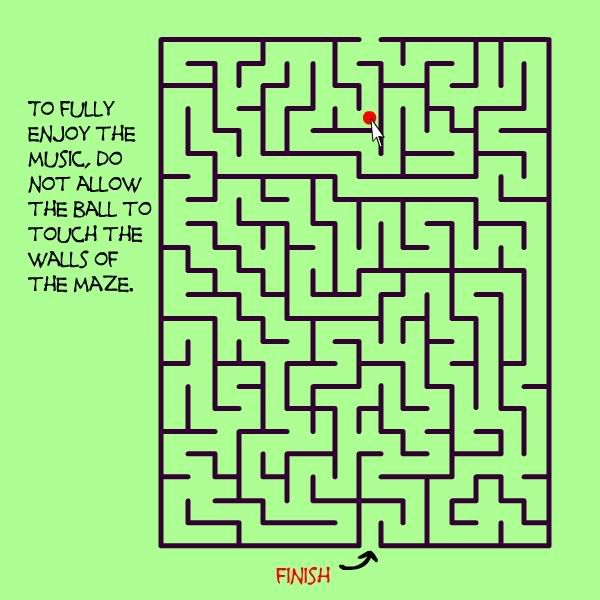
Thursday, April 27, 2006

- Reflections
This game can be made even more challenging with the use of a blindfold. The person who is holding onto the stick would be the one blindfolded. Because this was the first time they were playing this activity, the blind fold was not used as it would have been to difficult for beginners. It was interesting to see how these participants went about playing this activity as a group.
Sunday, April 23, 2006
This is the first time I have to write up a project management plan and I have no clue how to go about doing it. So I looked up for some examples on the net and here are some of the links:
http://www.darwinmag.com/read/080104/project.html
http://www.fhwa.dot.gov/programadmin/mega/megaiii.htm
http://www.wm.edu/mast/pdffiles/project_plan.pdf
Luckily for me, I found an example of a project management plan from QUT IT students. So after looking through all the examples and combining elements that are required for this assignment, this is the outline of my report:
Executive Summary
1.0 Introduction
1.1 Project Background
1.2 Purpose and objectives
1.3 Project Success Criteria
1.4 Scope, Inclusions and Exclusions
1.5 Dependencies and Assumptions
1.6 Constraints
1.7 Benefits for completion of project
1.8 Evolution of the Plan
1.9 Quality of products
2.0 Project Team
2.1 Client Liaison
2.2 Internal Structure and Individual roles
2.3 Project Task Management
3.0 Risk Management
4.0 Project activities and production timeline
4.1 Estimate activity duration
4.2 Identify project activities
4.2.1 Processed focused schedule
4.2.2 Project Milestones and Deliverables
4.2.3 Gantt Charts
4.3 Shape of project and methodologies
5.0 Creative Development
5.1 Sound/music art environments
5.2 Chosen 3 sound/music art environments
5.2.1 Audio Map
5.2.2 Roomful of Strings
5.2.3 The Room
5.2.4 Storyboards of 3 sound/music art environments
5.2.4.1 Audio map
5.2.4.2 Roomful of Strings
5.2.4.3 The Room
5.3 Prototyping
5.3.1 Out of the box - Sound Web
5.3.2 In the box - Labyrinth
6.0 Feasibility
6.1 Needs analysis (generic)
6.2 Needs analysis for "Sound Web" (Out of the box design)
6.3 Needs analysis for "Labyrinth" (In the box design)
7.0 Cost Benefit analysis
7.1 Balanced benefit case
7.1.1 Customer perspective
7.1.2 Financial perspective
7.1.3 Internal Process perspective
7.1.4 Organisational learning perspective
8.0 Testing and Evaluation
9.0 Refinements to prototype
10.0 Conclusion
References
Appendix
My Project management checklist
Monday, April 17, 2006

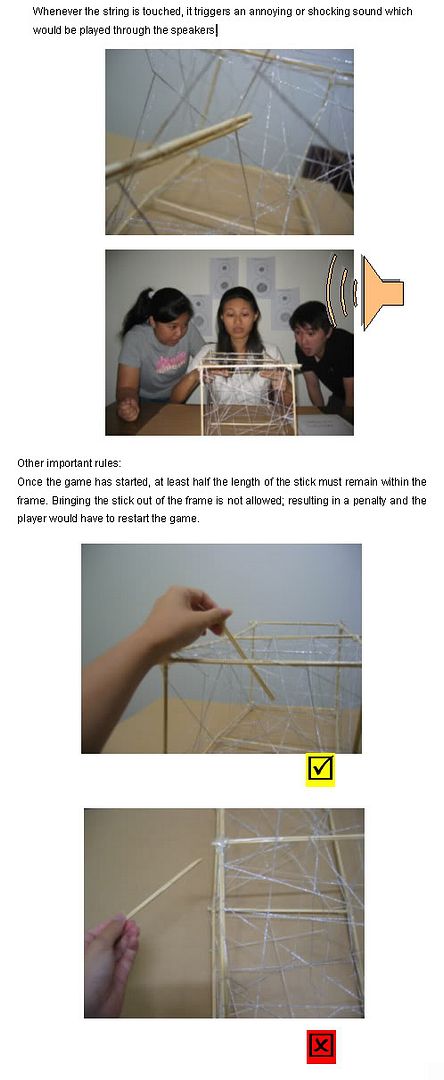
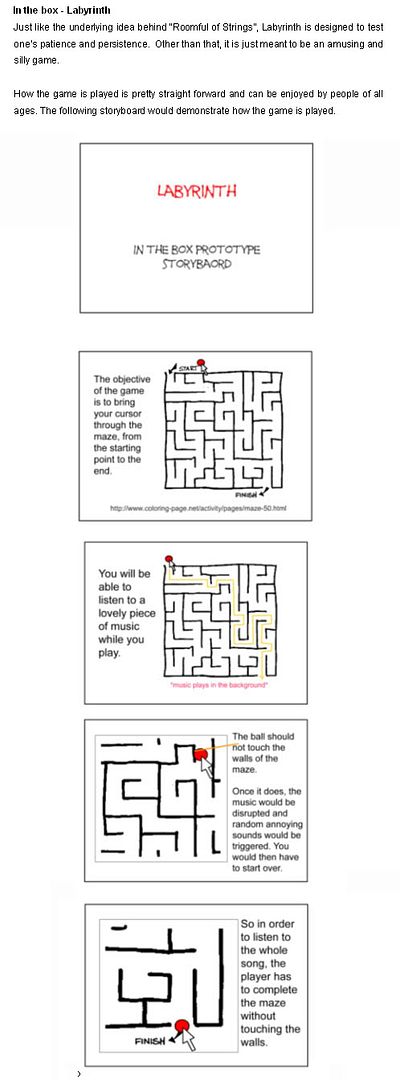
Friday, April 14, 2006


Click on these images to view mindmaps for both In and Out of the box prototypes.
Click on image to enlarge.
Click on image to enlarge.
Note that these were based on the Conductor idea which was conceptualised during the first phase of this project (please refer to entry posted on the March 29, 2006 called Design Variations). But this idea was scraped later on and the out of the box prototype became a smaller physical realised version of the Roomful of strings idea.
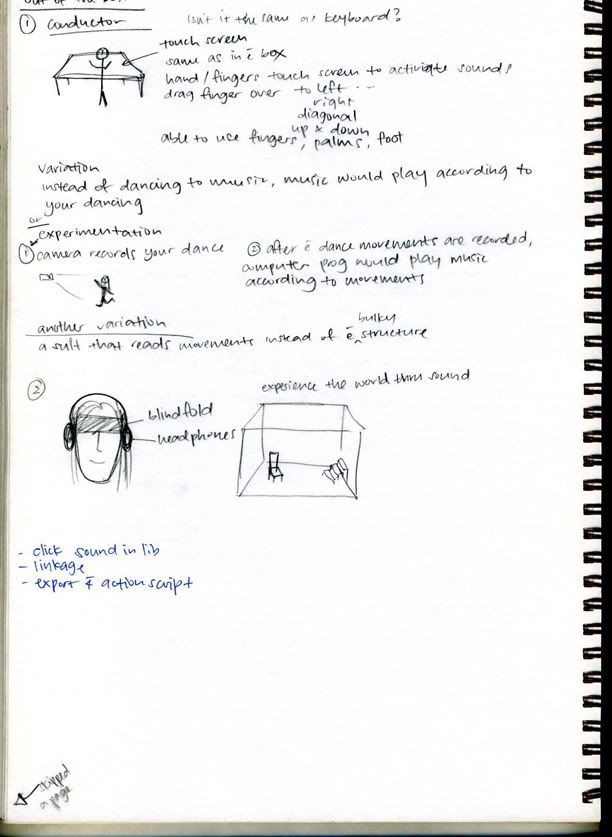
Sunday, April 09, 2006

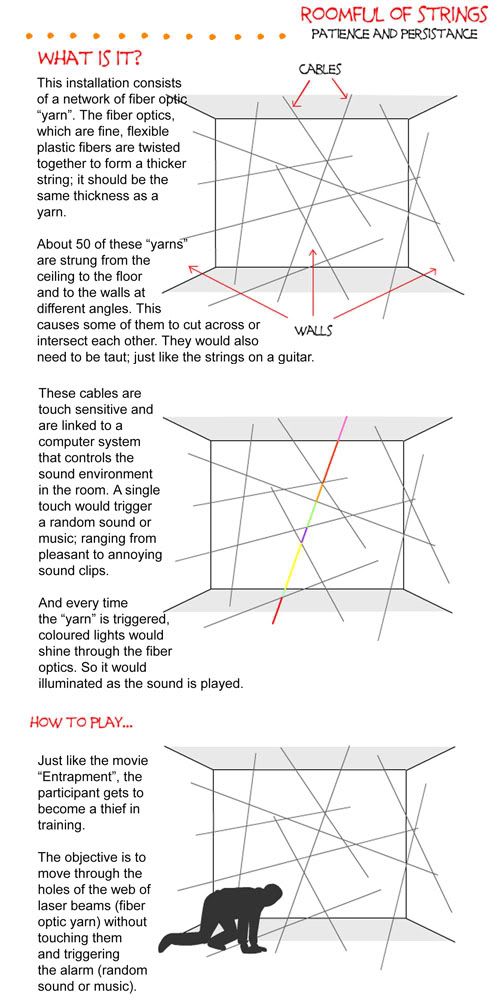
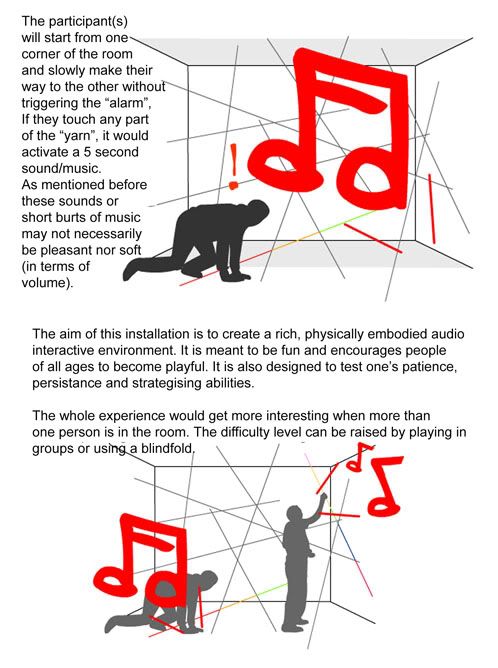
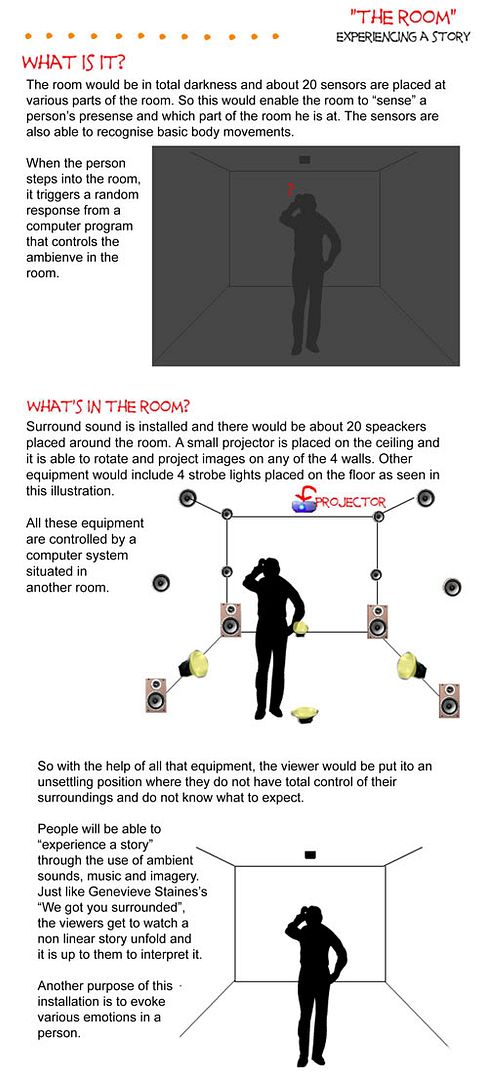
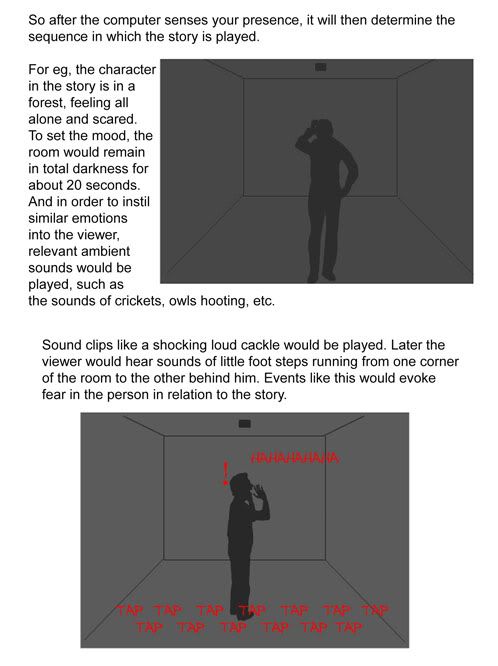
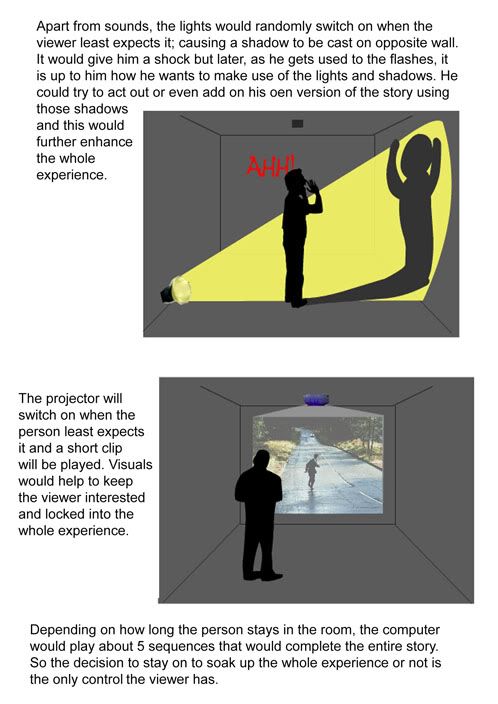
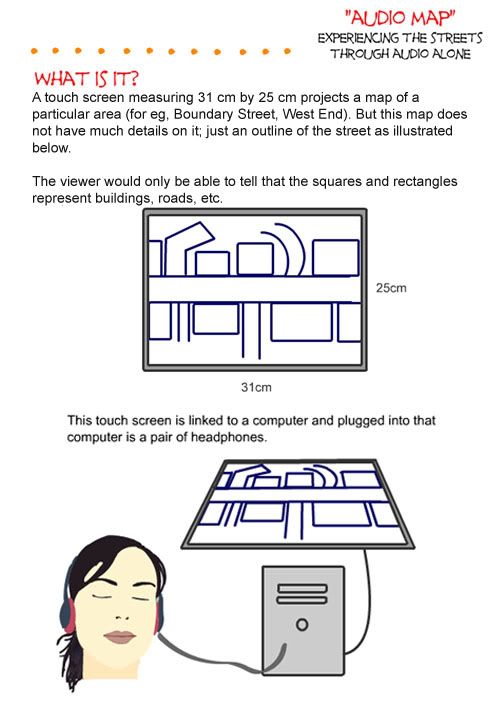
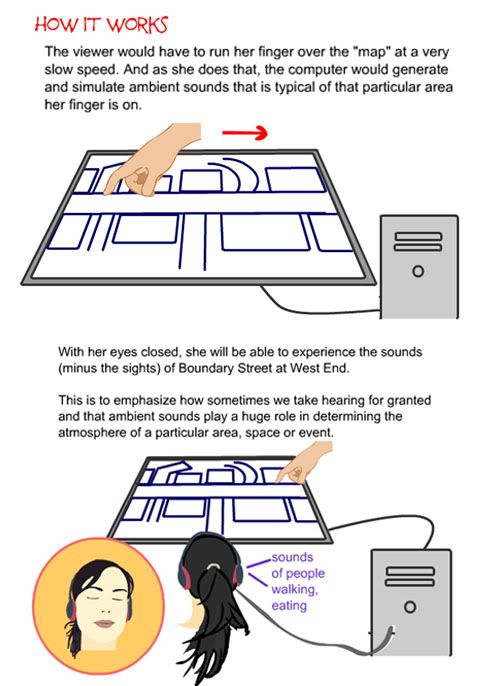
Thursday, April 06, 2006
The Theatre of Sounds by Garamond
http://www.garamond.it/index.php?risorsa=theatre_presentation
Interactive Sound Environment (1999 - 2000) by Somaya Langley
http://www.sounddesign.unimelb.edu.au/web/biogs/P000565b.htm
makomoo.com
http://www.makomoo.com/ITP/work.shtml
MattMontag.com
http://www.mattmontag.com/musicalcomposition.php
Stresspuppy.net
http://www.stresspuppy.net/portfolio/sound/index.html
Padded Perception
http://www.volkmarklien.com/installations/pad_per.html
Wednesday, April 05, 2006
What is in a needs analysis?
Client - Who is the possible client?
eg it could be an art installation for an exhibition
A game for a gaming company
Installation for medical research?
Location- Where is it held? Held at a The Block?
Audience - Who is your target audience? Demographics?
Materials needed - What are the materials needed to build/create prototype?
Expertise - Who would you need to help you with the prototype?
eg. People specialising in IT, software developers, sound engineers
Funding - Overall budget
Labour costs, costs of materials, other expenses
unit links
- KIB210 OLT
- Jane Turner - Interaction
- Jane Turner - Lecture 8
- Jane Turner - Lecture 9
- Jane Turner - Class notes
useful transits
- Jens Jensen - Interactivity
- Fundamentals of Interactivity
- Writing a critique
- Jonas Lowgren - Sketching Interaction Design
- How to create a clear project plan
- Prototyping
- Usability methods
- A Theory of Fun for Game Design" - What Games Aren't
- Flash kit
- Ljudo.com - Sound effects database
- Sounddogs - Sound effects database
- Critical Incident Technique Analysis
- Gamasutra
